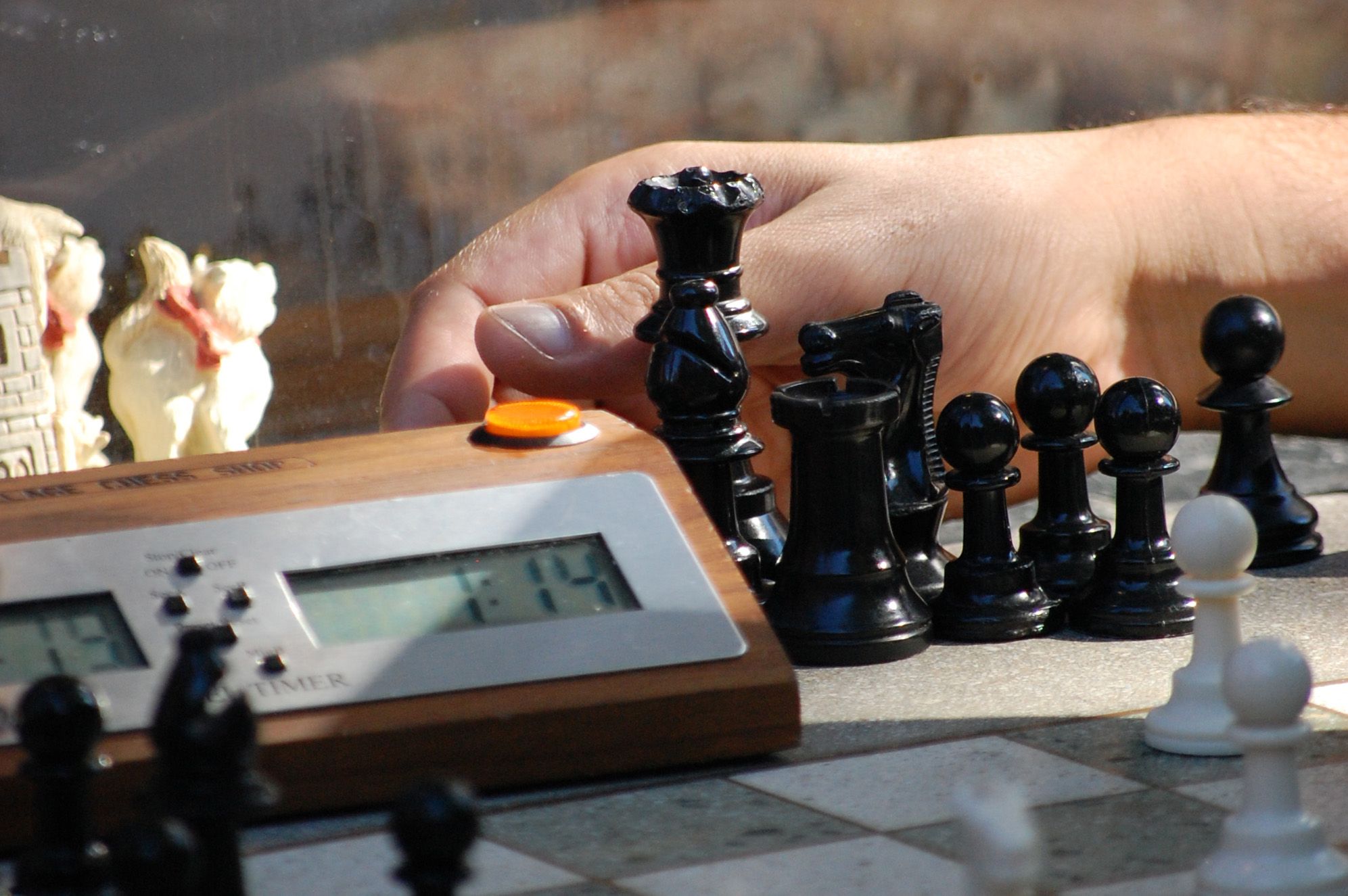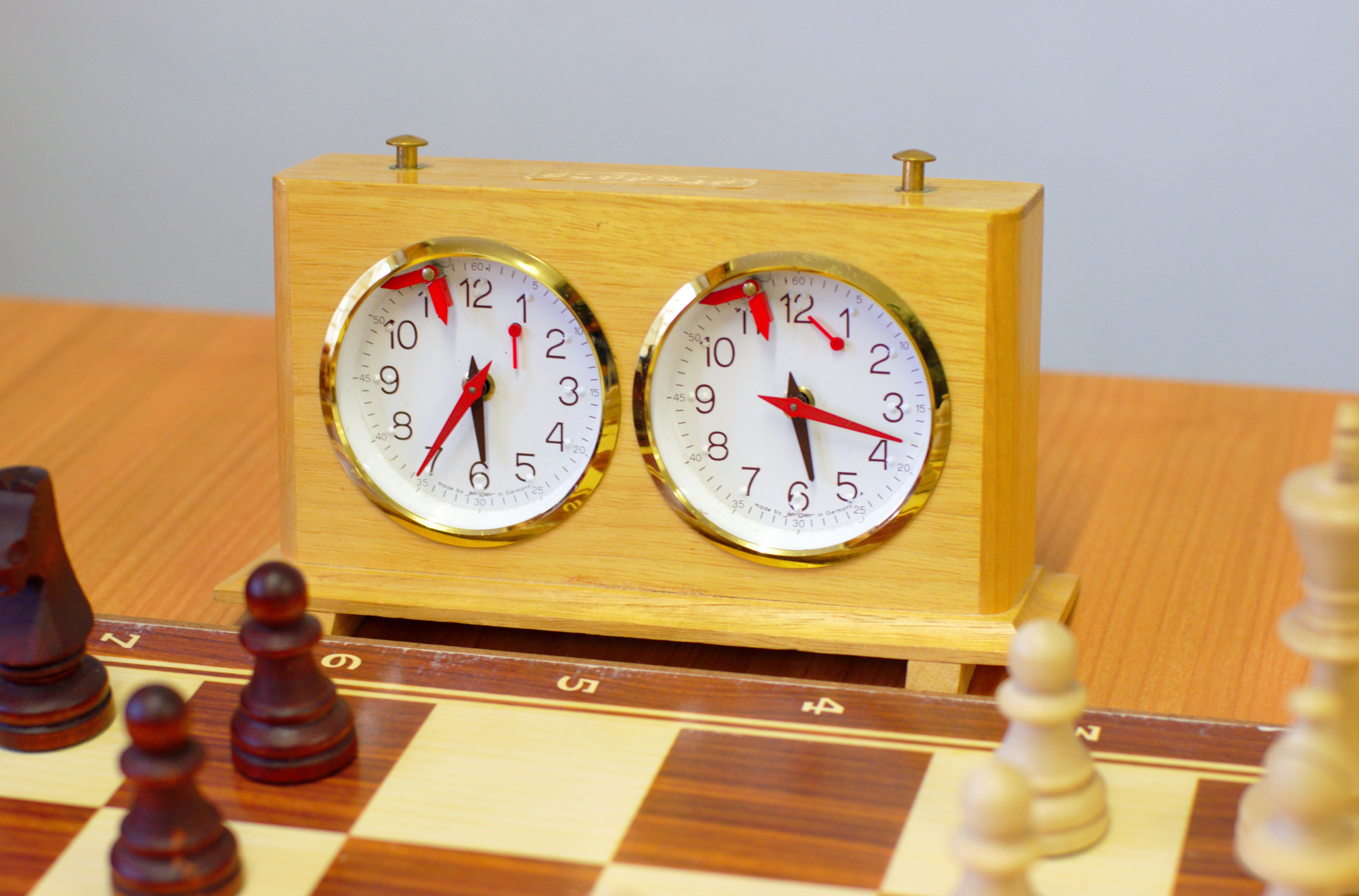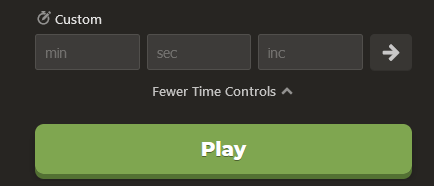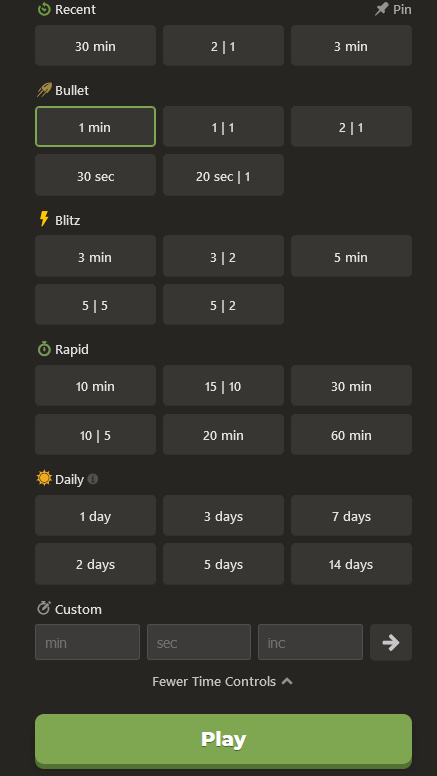
Time Controls
There are many different types of chess time controls. The term "time control" gets thrown around quite often, but what does it mean?
Here is what you need to know about time controls:
- What Are Time Controls?
- Classical Time Controls
- Rapid Time Controls
- Blitz Time Controls
- Bullet Time Controls
- How Do You Select A Time Control?
- Conclusion

What Are Time Controls?
Chess time controls refer to how much time each player receives to complete a game. They can be simple or complex. Most time controls on Chess.com are simpler.
Chess.com time controls are displayed in an "X | Y" format, while the "X+Y" format is also common. The first number refers to the number of minutes, while the second number refers to the seconds of increment per move. Increment is how many seconds are added to the clock for each move that is played.
For example, a 3|0 time control (or 3+0) refers to a game where each player receives three minutes to complete the game with no increment per move, while a 5|5 (or 5+5) time control refers to a game where each player receives five minutes and gains five seconds per move for the increment.

Classical Time Controls
Classical time controls generally refer to longer time controls and are usually used for over-the-board tournaments. Classical time controls can be more complex than the ones that Chess.com uses. For example, the time control used by FIDE for a world championship match would be considered complex:
Time controls for the World Championship games are 120 minutes for the first 40 moves, followed by 60 minutes for the next 20 moves and then 15 minutes for the rest of the game with an increment of 30 seconds per move starting on move 61.
— FIDE
More traditional USChess time controls used at larger tournaments might be 40/2, SD/1 (or 40 moves in two hours followed by a sudden death time control of one hour). Another example of a classical time control often used by local clubs is G/60 d5, which translates to 60 minutes per player with a five-second delay on each move before the clock begins to run.
A delay is different than increment, which adds time to the clock. A delay literally means that as soon as the clock is pressed (signaling that one player's move has been made), the other player's time does not actually start ticking down on the clock until after the amount of the delay.
Confusing, right? Luckily, Chess.com time controls are generally very simple and straightforward.

Rapid Time Controls
Rapid time controls on Chess.com are any time controls that are longer than ten minutes per player. The most popular rapid time control is 15|10, although many people play 30|0 and 60|0. Many other rapid time controls can be created and played on Chess.com by creating a custom time control.
Playing rapid chess, one can lose the habit of concentrating for several hours in serious chess.
— GM Vladimir Kramnik
You can create a custom time control by going to Play Online and locating the time control pull-down menu, select it and then find the "More Time Controls" option, select it and then the "Custom" button. You may enter your desired time control in these fields (minutes and increment) and then select the green "Play" button.

One example of a custom time control is 10|2, which is the official time control for the PRO Chess League. The time control currently used at FIDE's World Rapid Championship is 15|10.
Blitz Time Controls
Blitz time controls on Chess.com are between three and ten minutes per player. They are the most popular form on Chess.com, with well over two million blitz games played per day! The most popular time controls for blitz are 3|0 and 3|2, although 5|0 and 5|5 and are very popular as well. You can create custom time controls for blitz just like you can for any time control. FIDE's World Blitz Championship time control is currently 3|2.
It is very difficult to play a single blitz game. You want to play for a long time.
— GM Viswanathan Anand
Bullet Time Controls
Bullet time controls on Chess.com refer to any time control that is faster than three minutes per player. They are the fastest time controls and are the second most popular time controls on Chess.com with over half a million games played per day. The most popular time controls for bullet are 1|0 and 2|1, although many players play 30-second time controls!
How Do You Select A Time Control?
Now that you are familiar with the different time controls, how do you choose one? Simply go to Play Online and locate the time control pull-down menu. You will see the most popular time controls first:

If you would like to play one of these time controls, select it and then press the green "Play" button. After you select "Play," Chess.com will put you in the player pool for that time control and automatically pair you with another player who is seeking a game with the same time control.
I play way too much blitz chess. It rots the brain just as surely as alcohol.
— GM Nigel Short
If you would like more options for time controls, simply select the "More Time Controls" text, which displays additional options:

Creating custom time controls is very easy on Chess.com. As mentioned, you may select the "Custom" button displayed above and then enter your desired time control. After you enter your desired time control, simply press the green "Play" button.
Conclusion
You now know what chess time controls are, what increment and delay are, how time controls vary, and how to select a time control on Chess.com. It can take some time and experience for a player to find their preferred time controls, but they are all fun and different! Enjoy!







